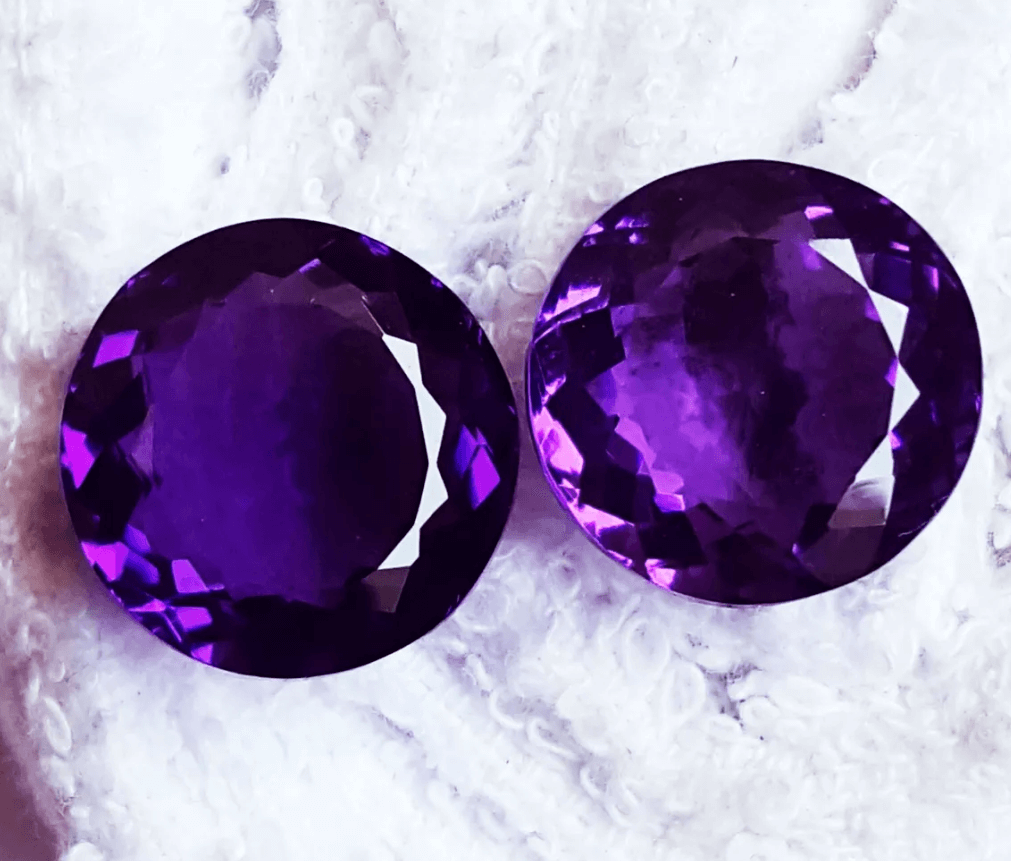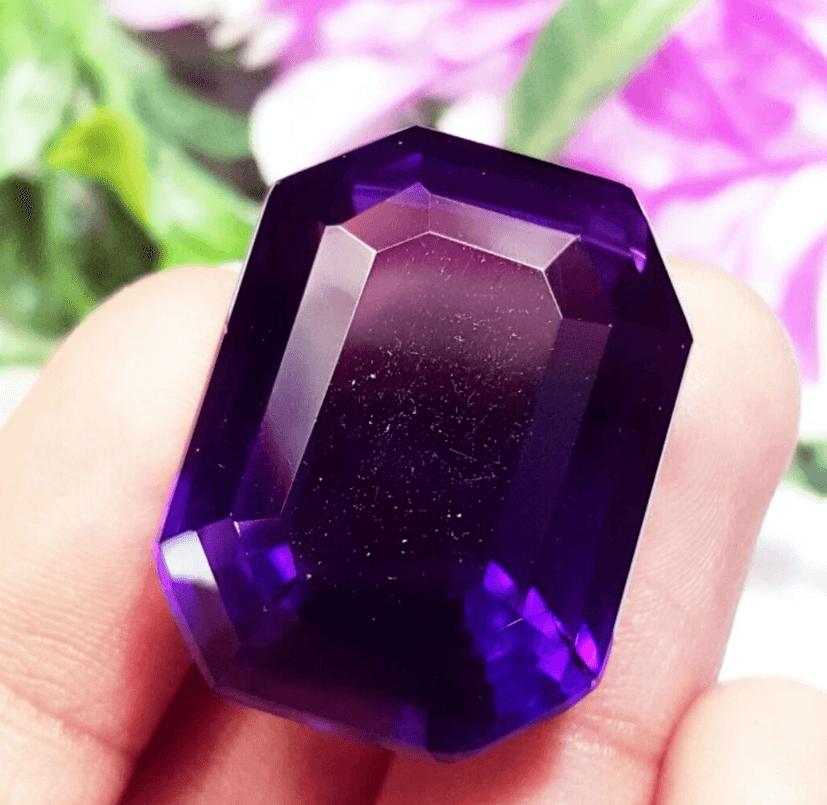
Violet Gemas stones: A Comprehensive Guide
Violet gemstones, with their captivating hues and rich history, have fascinated people for centuries. These stones, ranging from the well-known amethyst to the rare sugilite, offer a spectrum of beauty and significance. This comprehensive guide explores everything you need to know about violet gemas stones, from their origins and properties to their uses and symbolism.
What Are Violet Gemstones?
Violet gemstones are precious and semi-precious stones that exhibit shades of purple, violet, and lavender. These colors are often associated with royalty, spirituality, and mystery. The unique coloration of these gems is typically due to the presence of trace elements or impurities within the mineral structure.
Popular Violet Gemstones
Violet gemstones come in various types, each with its own unique characteristics. Among the most popular are amethyst, sugilite, and iolite. Let’s delve into the specifics of these stunning stones.
Amethyst: The Most Famous Violet Gemstone
Amethyst is arguably the most recognized violet gemstone. Known for its deep purple hue, amethyst has a rich history and is revered for its beauty and purported healing properties. This quartz variant has been used in jewelry for centuries and remains a favorite among gemstone enthusiasts.
Sugilite: A Rare Violet Gem
Sugilite is a relatively rare gemstone known for its vibrant purple color and unique properties. Discovered in the mid-20th century, sugilite has gained popularity for its aesthetic appeal and metaphysical properties. It is often used in high-end jewelry and sought after by collectors.

Iolite: The Viking’s Compass
Iolite, also known as the Viking’s Compass, is a gemstone with a fascinating history. Its pleochroism, showing different colors when viewed from different angles, made it an invaluable tool for ancient mariners. Today, iolite is appreciated for its distinct color and is used in various jewelry designs.
Lesser-Known Violet Gemstones
In addition to the popular violet gemstones, there are several lesser-known but equally beautiful stones such as tanzanite, spinel, and lepidolite. Each of these gemstones offers unique features and adds diversity to the world of violet gems.
Formation and Sources of Violet Gemstones
Violet gemstones form under specific geological conditions and are found in various locations around the world. Understanding the formation process and sources of these stones can enhance appreciation for their rarity and value.
Properties of Violet Gemstones
The allure of violet gemstones lies not just in their color but also in their physical, chemical, and optical properties. These properties determine the gemstone’s durability, brilliance, and suitability for different types of jewelry.
Read more: Learn All About is Mbappe gay
The Symbolism and Meaning of Violet Gemstones
Violet gemstones carry deep symbolic meanings and have been associated with various cultural and spiritual beliefs. From symbolizing nobility and luxury to representing peace and creativity, these stones have a rich tapestry of meanings.
Healing Properties of Violet Gemstones
Many believe in the metaphysical and healing properties of violet gemstones. These stones are said to offer benefits such as enhancing intuition, calming the mind, and providing spiritual protection.
Violet Gemstones in Jewelry
Violet gemstones are popular choices for various types of jewelry, including rings, necklaces, and earrings. Their striking color and versatility make them ideal for both everyday wear and special occasions.
Care and Maintenance of Violet Gemstones
Proper care and maintenance are crucial to preserving the beauty and longevity of violet gemstones. Tips for cleaning, storing, and handling these stones can help ensure they remain stunning for years to come.
Synthetic and Imitation Violet Gemstones
The market for gemstones includes both natural and synthetic options. Understanding the differences between genuine, synthetic, and imitation violet gemstones can help buyers make informed decisions.
Identifying Authentic Violet Gemstones
Identifying authentic violet gemstones requires knowledge of their physical characteristics and common treatments. Tips for recognizing genuine stones can protect buyers from fraud and ensure they get what they pay for.
Buying Guide for Violet Gemstones
When purchasing violet gemstones, several factors should be considered, including color, clarity, cut, and carat weight. This buying guide provides practical advice for selecting high-quality stones.
Famous Violet Gemstones
Throughout history, certain violet gemstones have gained fame for their size, beauty, or unique story. These notable examples highlight the allure and significance of these gems.
Investment Potential of Violet Gemstones
Violet gemstones can be a valuable addition to an investment portfolio. Understanding market trends and factors that influence the value of these stones can help investors make sound decisions.
Violet Gemas stones in Popular Culture
Violet gemstones have made their mark in popular culture, appearing in movies, literature, and media. Their captivating color and rich symbolism make them a favorite subject in various forms of storytelling.
FAQs
Can violet gemstones fade over time?
Yes, some violet gemstones can fade if exposed to prolonged sunlight or heat. Amethyst, for example, may lose its vibrant color with excessive exposure to direct sunlight. It’s important to store these gemstones away from harsh light and to avoid exposing them to high temperatures to maintain their color.
What is the most expensive violet gemstone?
Tanzanite is often considered one of the most expensive violet gemstones, especially in its deep blue-violet hues. Its rarity, coupled with limited mining locations, primarily in Tanzania, contributes to its high value. Fine-quality tanzanite with intense color can command significant prices in the gemstone market.
How can I tell if a violet gemstone is synthetic?
Determining whether a violet gemstone is synthetic can be challenging without proper equipment and expertise. However, some clues include perfect clarity and uniform color, which are less common in natural stones. It’s best to have the gemstone evaluated by a certified gemologist, who can use tools like microscopes and refractometers to identify synthetic stones.
Are violet gemstones suitable for daily wear?
Many violet gemstones, such as amethyst and iolite, are suitable for daily wear due to their hardness and durability. However, softer stones like lepidolite require more careful handling to avoid scratches and damage. Always consider the hardness and wearability of the gemstone before choosing it for everyday jewelry.
Do violet gemstones have any special meaning?
Violet gemstones are often associated with spirituality, intuition, and peace. Amethyst, for instance, is believed to enhance clarity of thought and is linked to sobriety and wisdom. Sugilite is thought to bring healing and protection, while iolite is associated with vision and guidance. The meanings can vary based on cultural and individual beliefs.
Where can I buy authentic violet gemstones?
Authentic violet gemstones can be purchased from reputable jewelers, gemstone dealers, and certified online platforms. It’s crucial to verify the credibility of the seller and request certification or documentation that verifies the authenticity of the gemstone. Buying from established and well-reviewed sources reduces the risk of purchasing synthetic or imitation stones.
Read more: Lainey Wilson Age: A Deep Dive into Her Life and Career
Conclusion
Violet gemas stones, with their enchanting hues and diverse properties, continue to captivate and inspire. Whether you’re a collector, investor, or simply an admirer, understanding these beautiful stones enhances their appreciation and value. Embrace the allure of violet gemstones and explore the possibilities they offer in jewelry, healing, and beyond.




